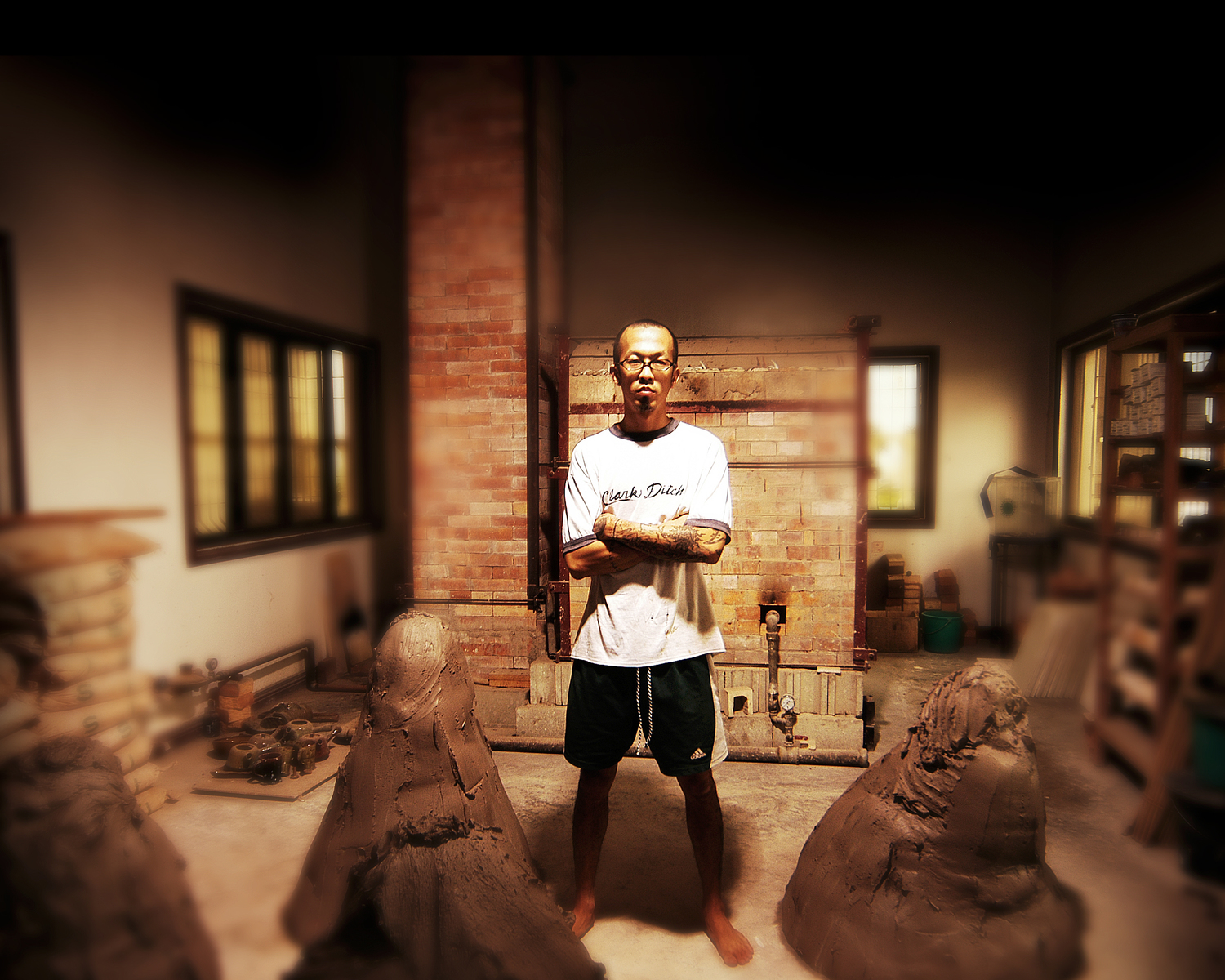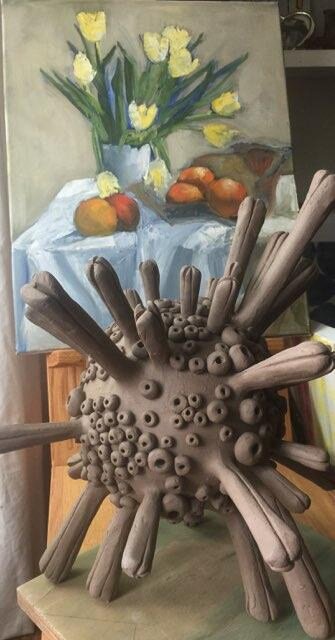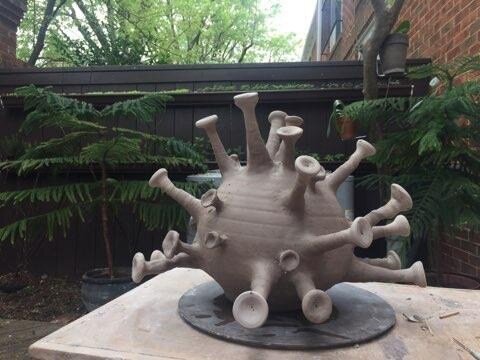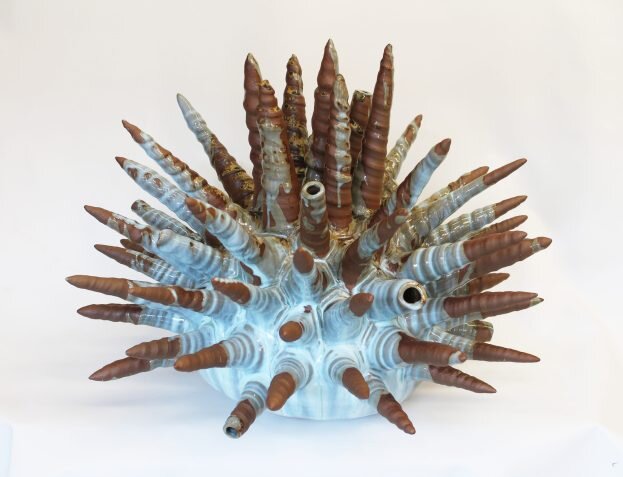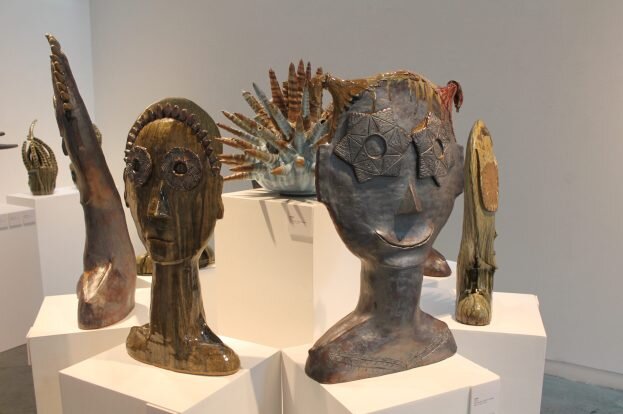Visualizing a Virus: Alum’s Art Captures Emotions of a Pandemic
MAY 5, 2020 BY LAURA MOYER
University of Mary Washington Online News
Hadrian Mendoza isn’t glorifying the novel coronavirus at the heart of the COVID-19 pandemic. But in images of the tiny particle, he sees more than fear, suffering, loss and grief.
To Mendoza, a 1996 Mary Washington graduate and internationally known fine-arts potter, viruses have long represented a fascinating intersection of danger and beauty. Starting in 2016, he began creating sculptural interpretations of viruses – his creations then were hollow spheres with sharp, spiny protrusions that served both to balance and to convey threat.
In early March, when Mendoza’s family found themselves isolating in their Arlington, Virginia, townhouse, the idea “crept back into my mind,” he said. From his makeshift front-porch studio, he conceived a sculptural version of a coronavirus. It’s less a rendering of the actual virus than a reimagining that captures the many emotions engendered by the pandemic. The result is art at its most timely, a reflection of current events and of the universal attempt to contain and control what affects us.
A business administration major in his Mary Washington days, Mendoza takes seriously the financial aspects of his artistic profession. He already has three commissions for versions of the coronavirus, all from collectors in his native Philippines, where he has held two solo exhibitions a year for 12 years.
It is satisfying, he said of his current work, “to take something negative and bring something positive out of it.”
Where the 2016 virus sculptures captured a certain snowflake-like quality, unique but symmetrical, Mendoza’s coronavirus is intentionally random, with rounded protrusions of different sizes that elevate and support the center. Even so, he said, the form has a pleasing quality.
“I try to make it look as disgusting and nasty as I can, because that’s what it really is,” Mendoza said. “But when you try to make it look so gross, it ends up beautiful.”
The glazing that enhanced the danger and beauty of Mendoza’s earlier viruses has yet to be completed on the coronavirus works. Isolating at home leaves him no way to fire his pieces. When social-distancing restrictions lift, though, Mendoza plans to use a wood-burning kiln and an oxblood glaze for a color effect that is chiefly red with light blue tones.
Meanwhile, he is making the best of unforeseen circumstances.
Mendoza is the full-time art director for St. Thomas More School in Arlington, and he has adapted to teach his students via videoconference. He assigns projects to challenge their creativity using materials they have on hand.
His wife is working from home now, too, and their children, in eighth and fifth grades, are attending school remotely. “With four of us here, we’ve had a lot of bonding time,” he said. “It slows everything down.”
Mendoza has enjoyed a boost in studio time, even if the studio is outside and open-air. And he’s found creating the coronavirus pieces oddly therapeutic, a respite from being stuck in place and a welcome reminder of creating his earlier virus artworks.
“For me, I’m just creating,” he said. “I see it as picking up where I left off.”
